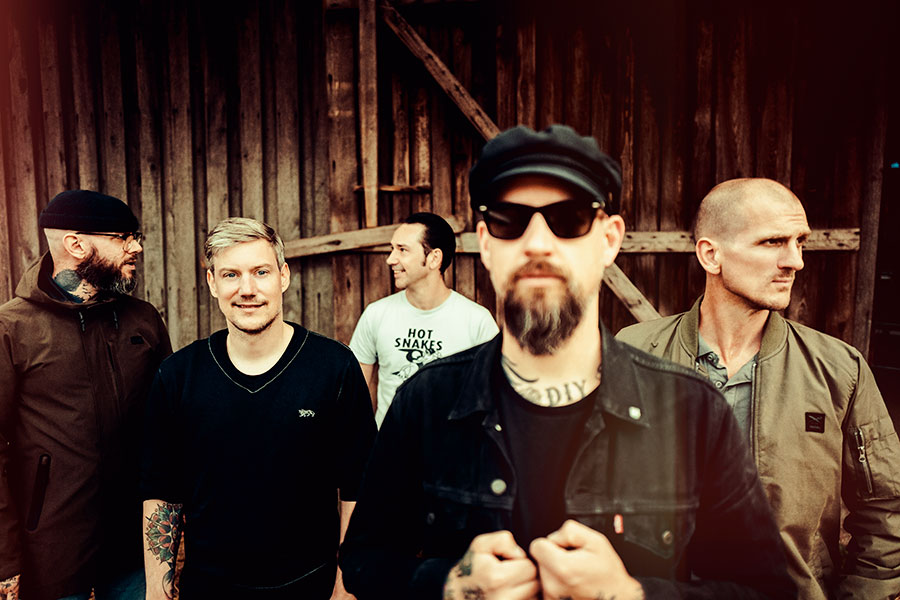Punk rockers often find themselves being criticized (wrongly, in my view) for not knowing how to play their instruments. These criticisms can be due to any range of reasons such as the use of “simplistic” chords or a preference for noisy, dissonant sounds. But post-punk band Turbostaat will likely not find themselves accused of these things. The quartet from northern Germany are skilled musicians yet their music is seemingly devoid of indulgent solos or virtuoso skills lacking in emotion. Turbostaat is straight to the point with passion and power.
This month, get to know the post-punk rockers Turbostaat and learn German with music!
Get to Know Turbostaat
Turbostaat was founded in January 1999 in a practice room at a popular arts center in Husum, in the very north of Germany. Before releasing their first album, the band moved their base further north from Husum to Flensburg, near the border between Germany and Denmark.
The founding and still current line-up of the group is vocalist Jan Windmeier, guitar players Rollo Santos and Marten Ebsen, bass player Tobert Knopp, and drummer Peter Carstens.
The members had previously played in other punk bands, including Exil, Zack Ahoi, and Unabomber. And today, despite having additional side projects in addition to Turbostaat, the band still continues to put out a new album every few years like clockwork.
The Music of Turbostaat
The band released their first two albums, the bird-named Flamingo from 2001 and Schwan from 2003, with the Hamburg record label Schiffen.
Flamingo establishes the band’s blueprint by being instrumentation-forward. That is, the band hit you with a wall of music at nearly all times. Tracks like “Rache für Mautze” and “U-Boot Manöver” embody a real punk rock attitude and sound.
The 2003 follow-up, Schwan, maintains the same attitude and demeanor from the band but sounds more produced, a bit darker, and shows more progression in dynamics. While it is difficult to point to a truly “catchy” track in these early albums, “Monstermutter” is about as close as it gets with steady drums and bass keeping things moving while a melodic guitar riff wanders, but never aimlessly.
With their third album, Vormann Leiss from 2007, the band comes out swinging. They are full of energy with each release, but somehow they seem to find that extra bit more with Vormann Leiss. The album feels more creative and experimental. This is not your standard three-chord punk rock of decades early. Tracks like “Ja, roducheln!!” and “Bei Fugbaums” show that guitars are the real star of Turbostaat but that all of the parts really blend together to create that aforementioned wall of sound. They even sneak some melodies in there when and where you least expect them.
2010’s Das Island Manöver acts as the band’s declaration that the band will not be pigeonholed or predictable. The title track shows off everything the band has learned up to that point. There is a measured pace where the instrumentation gains momentum and then, and only then, when they are hitting their stride do the vocals join in. But just as quick as you get comfortable, they hang a hard right with “Fünfwürstchengriff,” a rhythmic and catchy track that you won’t soon forget.
The blending of their post-punk roots and a willingness to take some chances continues on 2013’s Stadt der Angst. The band has always had a love of group sing-along choruses and “Tut es doch weh” puts it to practice against edgy verses. The closing track “Sohnemann Zwei” takes a darker path where the band’s otherwise wall of sound shows remarkable restraint before really letting go to ride a wave of dynamics.
The title track of 2016’s Abalonia shows the band’s mastery of blending their heaviness with a vocal melody. It carefully straddles that line of staying rock and never goes too poppy. This is due, in part, to the band’s strong instrumentation that always throws something interesting into the mix.
With 2020’s Uthlande, the band finally saw one of their albums crack the German top 10 albums. Peaking at number six in the charts – and topping the German vinyl charts – Uthlande shows the band staying true to themselves. And that includes the album cover, which is a painting by guitarist Ebsen’s grandfather. Tracks on the album like “Brockengeist” show a mature side of the band; you still hear those punk roots but the sound has developed.
Looking for another Ohrwurm to help you learn German? Check out previously featured musicians and bands!
Top photo by Andreas Hornoff, courtesy of KKT. This post contains affiliate links.
